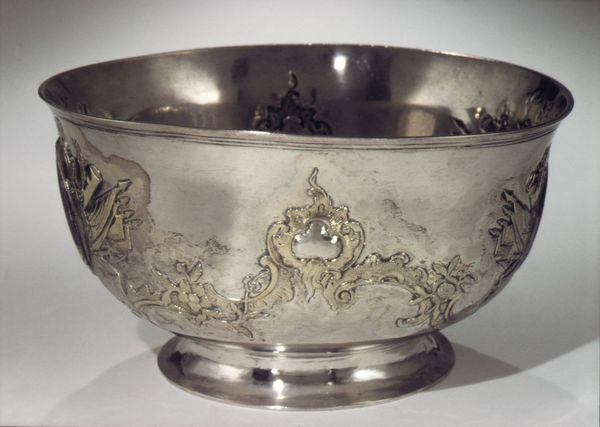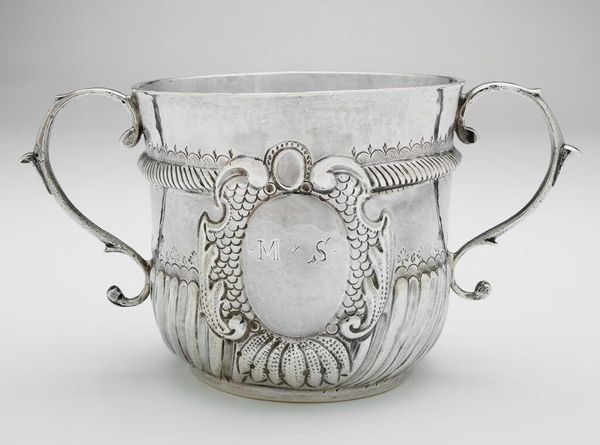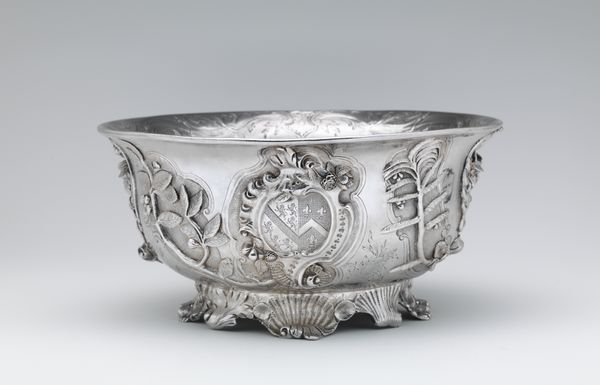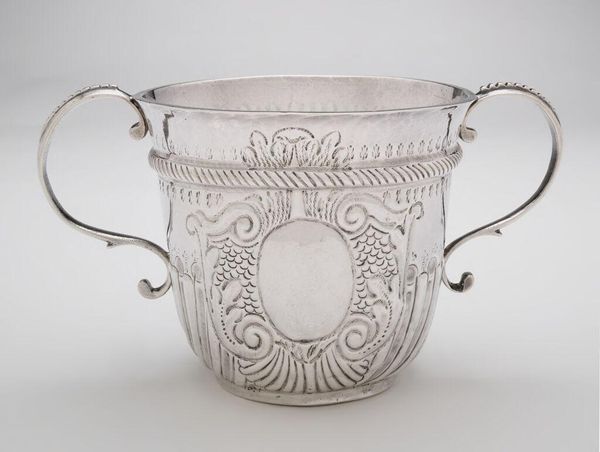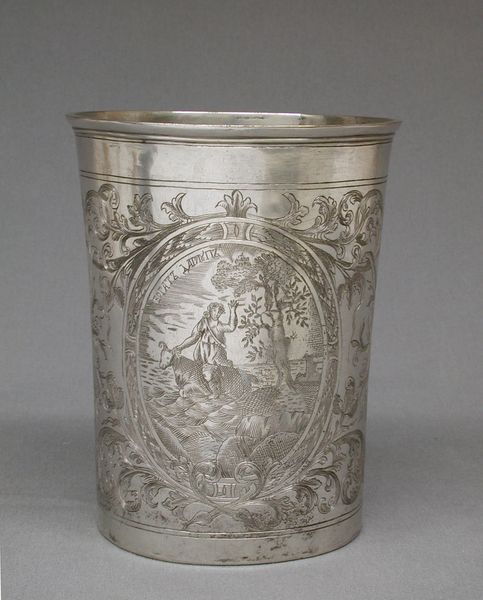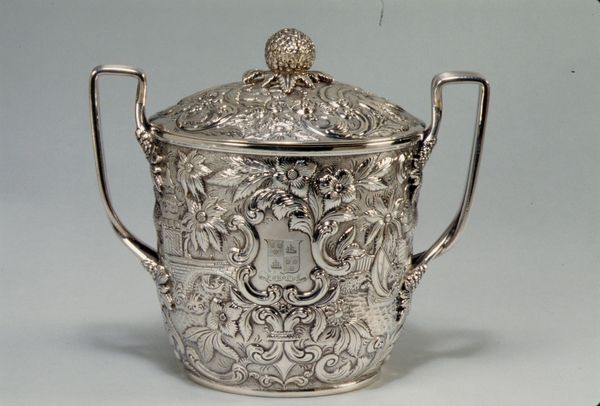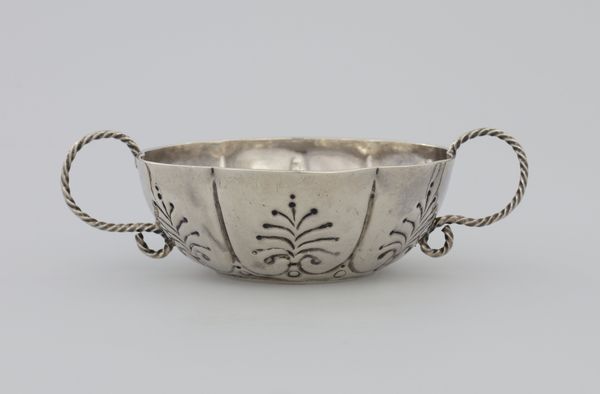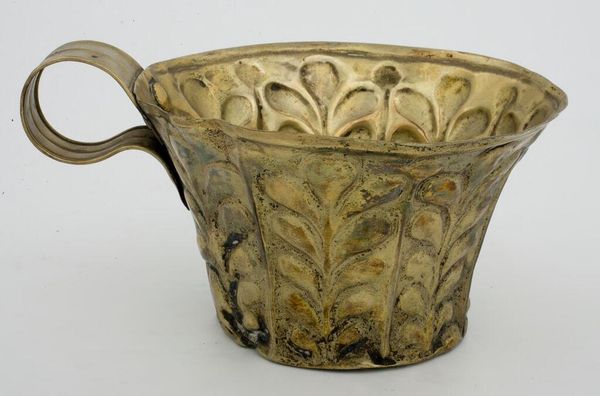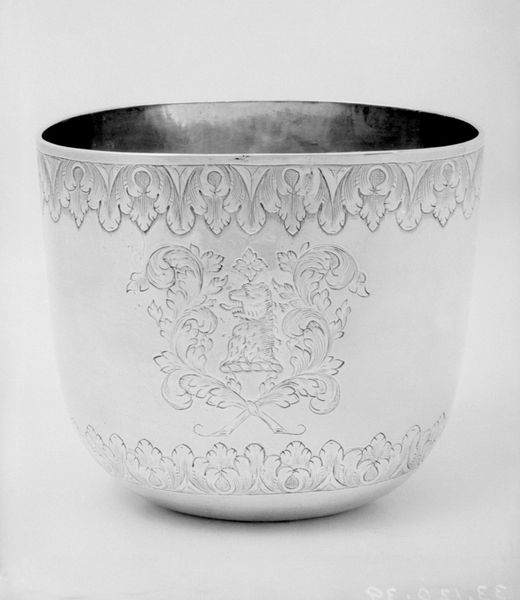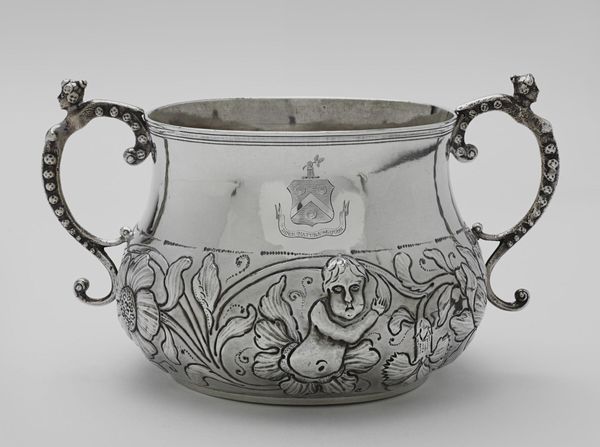
#
ornate
#
3d sculpting
#
3d printed part
#
sculpture
#
jewelry design
#
flower
#
sculptural image
#
unrealistic statue
#
3d shape
#
stoneware
#
united-states
#
jewelry
#
arm
Dimensions: Overall: 4 5/16 in. (11 cm); 17 oz. 12 dwt. (547.7 g) Lip: Diam. 5 3/4 in. (14.6 cm) Base: Diam. 3 7/8 in. (9.8 cm)
Copyright: Public Domain
Curator: Welcome. We're standing before "Waste Bowl," crafted by Andrew Ellicott Warner around 1845. It's currently held at the Metropolitan Museum of Art. Editor: What strikes me first is the incredibly ornate surface, this dense network of sculpted forms. It feels very elaborate for a bowl that I’m assuming was meant to hold…waste? Curator: Well, let's consider what constituted "waste" in the 19th century. It wasn't the era of mass consumption that defines today's relationship to waste. So objects like these take on a greater resonance and also reflect social values of the era. A waste bowl held tea leaves or, sometimes, bones from a meal, and indicated the upper-class position of the household. Editor: Yes, that context certainly re-frames my initial reading. Still, as a work of pure craft, the detailed relief work of flowers, what appear to be little buildings, the way it all spirals outwards – it's amazing. I see several orientalist motives represented as part of the design, like miniature pagodas. Curator: Absolutely. These orientalist motifs speak to a particular fascination with and projection onto the East common during that period, a romanticized vision divorced from actual cultural understanding. These references also mirror patterns of colonial extraction happening contemporaneously with the creation of this waste bowl. The Thompson coat-of-arms is etched in the middle of all these landscape scenes too. Editor: Good catch! The placement of the crest so prominently underscores the possessive relationship these wealthy families had to the landscapes, peoples, and the exotic wares coming into their homes from these lands. And thinking about the actual object and its purpose, all those tea leaves, remnants, gathering in the dark – quite a contrast to its polished exterior. Curator: Precisely! It also reveals that so-called waste is often a marker of both privilege and access. The discarded tea leaves signify participation in global trade networks fueled by colonial exploitation. Editor: So this object really encapsulates several historical paradoxes about consumption, wealth, and how value is assigned through the act of making something ostensibly disposable into a carefully decorated form. Curator: Yes, an object lesson, quite literally. Editor: A rather beautiful, yet disquieting, testament to its time.
Comments
No comments
Be the first to comment and join the conversation on the ultimate creative platform.

